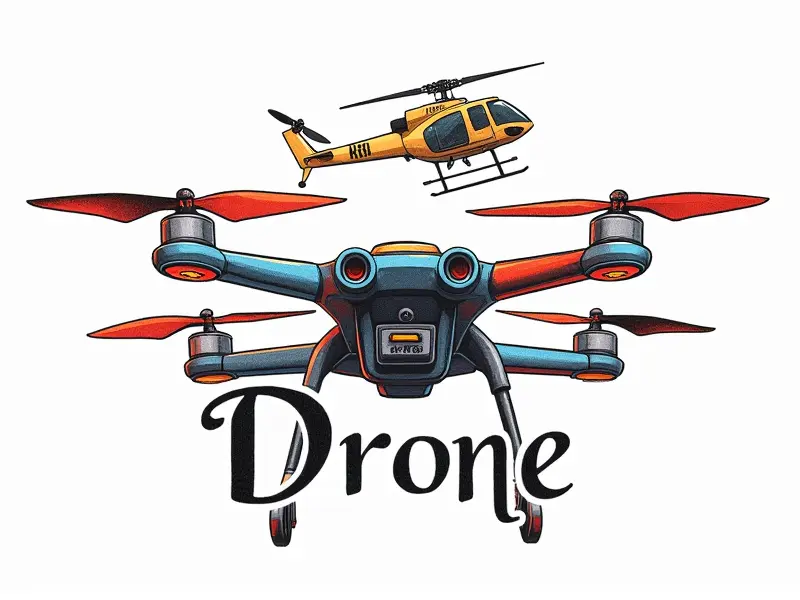FPV vs. non-FPV modes differ?

Why Switch to FPV Mode from Non-FPV?
Flying a drone in First Person View (FPV) mode offers an entirely different experience compared to traditional non-FPV modes. When you switch to FPV, you gain the ability to see what your drone sees through a live video feed transmitted directly to your headset or display device. This immersive perspective transforms how you interact with your drone and opens up new possibilities for aerial photography, racing, and exploration.
Understanding the Advantages of FPV Mode
The advantages of flying in FPV mode are numerous:
- Enhanced Control: With a direct video feed, you can make precise adjustments to your drone's flight path and altitude.
- Better Visibility: FPV allows you to see obstacles and terrain features that might be difficult to spot with just line-of-sight control.
- Increased Engagement: The immersive nature of FPV enhances the thrill and excitement of flying, making it more enjoyable.
FPV Mode: Why It Beats Non-FPV
Flying in FPV mode provides several advantages over non-FPV modes:
- Better Maneuverability: You can perform complex maneuvers and navigate tight spaces with greater ease.
- Improved Photography: Capture stunning aerial shots from unique angles that would be impossible to achieve otherwise.
- Safety Enhancements: FPV allows you to avoid obstacles more effectively, reducing the risk of crashes and damage.
How FPV Enhances Your Drone Experience
The transition from non-FPV to FPV mode significantly enhances your drone experience in several ways:
- Real-Time Feedback: Instantaneous visual feedback helps you make quick adjustments and react to changing conditions.
- Extended Range: With the right equipment, you can fly your drone much farther from you while still maintaining control.
- Competitive Edge: FPV is essential for drone racing and other competitive flying activities where speed and precision are crucial.
Maximizing Flight with FPV Over Non-FPV
To get the most out of your FPV experience, consider these tips:
- Invest in Quality Gear: A high-quality camera and video transmitter will provide clearer visuals.
- Practice Regularly: The more you fly in FPV mode, the better you'll become at navigating complex environments.
- Leverage Technology: Use telemetry systems to monitor your drone's performance data and optimize flight parameters.
FPV vs. Non-FPV: Which is Better for You?
The choice between FPV and non-FPV modes depends on your specific needs and goals:
- For Beginners: Start with non-FPV mode to get comfortable with basic flight controls before moving to FPV.
- For Photographers: FPV offers unparalleled flexibility for capturing unique aerial shots and videos.
- For Enthusiasts: If you're passionate about drone racing or exploring remote areas, FPV is a must-have feature.
Why FPV Mode Is a Game-Changer in Drones
The introduction of FPV technology has revolutionized the way we use drones. It offers unprecedented control and visibility, making it possible to achieve feats that were once unimaginable:
- Innovative Photography: Capture breathtaking aerial shots from unique perspectives.
- Sports and Racing: FPV is the backbone of drone racing, providing a thrilling competitive experience.
- Exploration and Mapping: Use FPV to explore hard-to-reach areas for mapping and surveying purposes.
Exploring the Benefits of FPV Over Non-FPV Modes
The benefits of flying in FPV mode are clear:
- Better Control: With direct visual feedback, you can make more precise adjustments to your drone's flight path.
- Enhanced Visibility: See obstacles and terrain features that would be obscured by line-of-sight control.
- Increased Engagement: The immersive nature of FPV makes flying more enjoyable and engaging.
Key Differences Between FPV & Non-FPV Modes
The primary differences between FPV and non-FPV modes are:
- Perspective: In FPV mode, you see the world from your drone's perspective; in non-FPV, you control it via line-of-sight.
- Range: FPV allows for extended flight ranges due to video transmission technology.
- Control: FPV provides more precise and responsive control over the drone's movements.
The Advantages of Flying with FPV Over Traditional Modes
Flying in FPV mode offers several advantages over traditional modes:
- Better Maneuverability: Navigate tight spaces and perform complex maneuvers more easily.
- Improved Photography: Capture unique shots from angles that would be impossible to achieve otherwise.
- Safety Enhancements: Avoid obstacles more effectively, reducing the risk of crashes and damage.
What's the Difference Between FPV and Non-FPV Modes?
The main difference between FPV and non-FPV modes is the perspective from which you control your drone. In non-FPV mode, you rely on line-of-sight to guide your drone, whereas in FPV mode, you see exactly what your drone sees through a live video feed.
Conclusion
Flying with FPV mode offers an unparalleled experience that enhances both the fun and functionality of using drones. Whether you're into photography, racing, or exploring remote areas, FPV provides unique advantages over traditional non-FPV modes. By understanding these differences, you can make informed decisions about which mode best suits your needs and goals.

